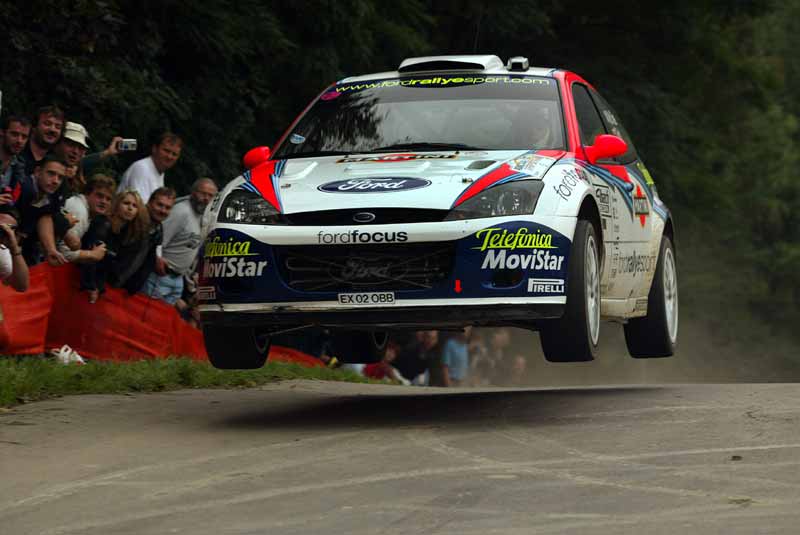Q&A: Steve Farrell - Subaru.
This week, the 555 Subaru Rally Team announced the appointment of Steve Farrell to the position of Chief Engineer.
Farrell has worked in many motorsport championships, most recently in F1 where he worked as Chief Engineer for the BAR Formula One team. Here Farrell talks about what F1 and WRC have in common:
Q:
Steve (Farrell). As someone who has worked in F1 for the past four years, what are your first impressions of the World Rally Championship and service park here in Rallye Deutschland?
This week, the 555 Subaru Rally Team announced the appointment of Steve Farrell to the position of Chief Engineer.
Farrell has worked in many motorsport championships, most recently in F1 where he worked as Chief Engineer for the BAR Formula One team. Here Farrell talks about what F1 and WRC have in common:
Q:
Steve (Farrell). As someone who has worked in F1 for the past four years, what are your first impressions of the World Rally Championship and service park here in Rallye Deutschland?
Steve Farrell:
I've been really impressed by what I've seen here so far. From my memories of rallying, it's amazing what the Championship has achieved. Walking around the service park now, it gives a clear impression that these are professional manufacturer teams working hard to win a Championship. Rallying is certainly on the up. It's a good product and I believe that the WRC can be where F1 is now in a few years time. On event, the size of the teams seem very similar to those in F1 and the hospitality areas look very impressive however, it's back at base that the F1 teams are currently much larger - especially in relation to the engineering side of things.
Q:
Regarding technology and engineering - what's the difference between a rally car and an F1 car?
SF:
The regulations relating to the two sports are very different. In rallying you are slightly freer to explore new areas of technology and, for an engineer, that's very exciting! There is no shortage of technology included in the rally cars compared to an F1 car, it's just that it's very different and, in many respects, more interesting. In F1, aerodynamics are the all important factor but in reality this has no real relevance to the world at large. On a rally car you can see connections relating to the real world and it makes what you're doing seem even more worthwhile.
Q:
What about the levels of IT in the cars - are there significant differences?
SF:
In many ways, Rally cars and F1 cars are almost as complicated as each other. However, the benefit that you have with a F1 car is that it is never too far away from the control centre during a race which makes communication between the cars and engineers much easier. During an F1 race, the driver doesn't need to do anything to change the set up of the car as this can all be done automatically from the pits while the car is still running on the track. Called 'two-way telemetry', it means that if the F1 driver has a problem the team can react to it faster than can currently be achieved in rallying.
Q:
Looking at the materials used to build the cars - how do these differ?
SF:
The main difference is the use of composite materials. While these are used extensively on F1 cars, they are only used for certain sections of a rally car - largely due to their significant cost. All suspension on F1 cars is composite. In fact, ignoring the engine and gearbox, approximately 70 per cent of the components are composite.

